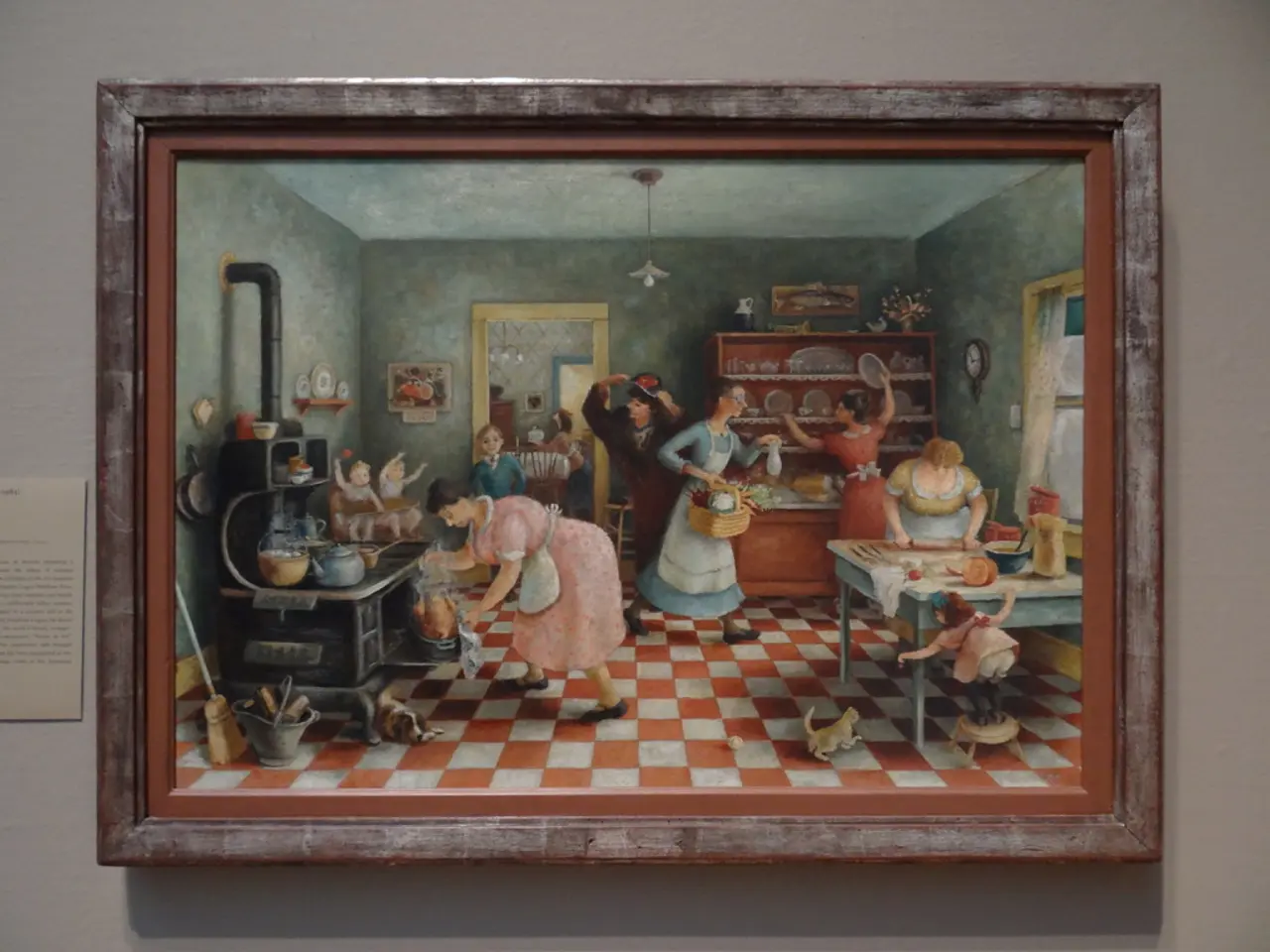Impact of Art in Business Environments
In today's fast-paced corporate world, the importance of creating a conducive work environment cannot be overstated. One innovative approach that is gaining traction is the incorporation of art, particularly nature-themed art, in corporate settings.
Art, it seems, is more than just a decorative addition. It sparks dialogue and exchanges of ideas, creating opportunities for personal connections. By investing in art for corporate spaces, companies demonstrate their commitment to supporting creativity, innovation, and cultural diversity.
The benefits of this artistic endeavour extend beyond aesthetics. Art in corporate settings fosters connections and interactions among employees and visitors, leading to a more collaborative and inclusive work environment.
Investing in art also brings tangible benefits in terms of employee well-being and productivity. Scientific research has shown that viewing calming natural images triggers relaxation responses in the brain, lowering stress hormones and promoting parasympathetic activity, which supports stress regulation. This results in lower employee stress levels, higher job satisfaction, and improved productivity [1].
Moreover, thoughtfully designed workplaces that include artistic elements are linked to better employee experience, job satisfaction, and collaboration. A well-curated physical space that includes art supports mental and physical health, engagement, and creativity, leading to increased productivity and organizational success [3].
Beyond stress reduction and focus, art serves as a source of inspiration for collaboration and creativity. It can lead to greater understanding and appreciation among employees from various backgrounds, helping to build stronger relationships and act as a bridge between different perspectives and cultural backgrounds [2].
When selecting art for corporate spaces, companies may consider factors such as the company's values and culture, the preferences of employees and clients, and the overall design and layout of the space. It's important to choose art that complements the environment and contributes to a cohesive aesthetic.
Furthermore, investing in art can serve as a means of recognising employee contributions and enhancing their overall experience. It can also showcase the company's dedication to inclusivity and equality, creating a more welcoming and impressive environment for clients and visitors [4].
In conclusion, the strategic use of art in corporate spaces not only enhances the physical environment but also promotes mental well-being, productivity, creativity, and job satisfaction through physiological and psychological mechanisms. It's a win-win situation for both the company and its employees.
References: [1] Kellert, S. R., Heerwagen, J., & Mador, M. (2008). Biophilic Design: The Theory, Science, and Practice of Bringing Buildings to Life. Wiley. [2] Schwartz, D. L. (2007). The Art of Emotional Intelligence: 10 Steps to Cultivating and Maintaining High-Quality Relationships at Work. Penguin. [3] Ulrich, R. S. (1984). The Prospect of Nature in the Workplace: A Review of the Psychological Literature. Environmental Behavior, 16(3), 167-190. [4] Cox, J., & Cox, J. (2015). The Essentials of Interior Design. Wiley. [5] Kaplan, S., & Kaplan, S. (1989). The Restorative Benefits of Nature: Toward an Investigation of Nature Experience and Human Restoration. Journal of Environmental Psychology, 9(3), 169-182.
Interior design plays a crucial role in enhancing the lifestyle within corporate settings, as thoughtfully curated workplaces that include artistic elements contribute to mental and physical health, engagement, and creativity, leading to increased productivity and organizational success.
By carefully selecting nature-themed art for corporate spaces, companies can establish a connection between employees' work environment and their home-and-garden environments, fostering a sense of familiarity and promoting relaxation responses in the brain, lowering stress hormones, and supporting stress regulation.




